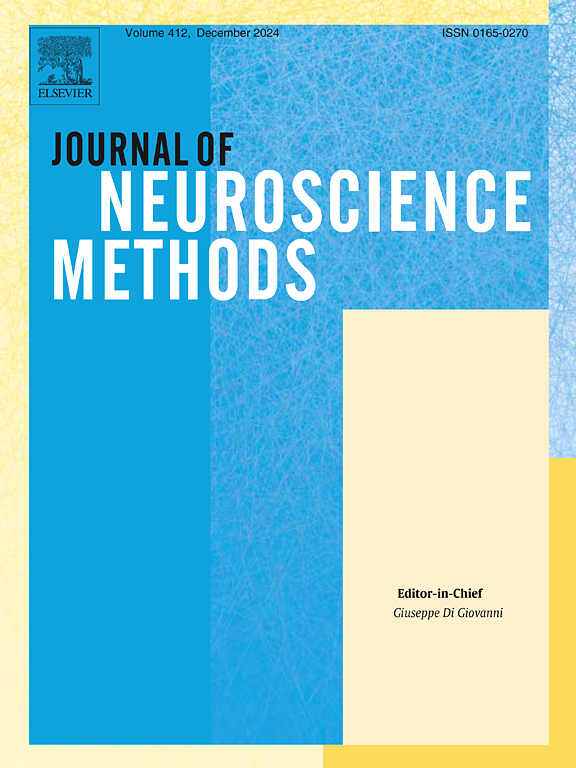EEG-based fatigue state evaluation by combining complex network and frequency-spatial features
IF 2.7
4区 医学
Q2 BIOCHEMICAL RESEARCH METHODS
引用次数: 0
Abstract
Background
The proportion of traffic accidents caused by fatigue driving is increasing year by year, which has aroused wide concerns for researchers. In order to rapidly and accurately detect drivers' fatigue, this paper proposed an electroencephalogram (EEG)-based fatigue state evaluation method by combining complex network and frequency-spatial features.
New method
First, this paper constructed a complex network model based on the relative wavelet entropy to characterize the correlation strength information between channels. Then, the differential entropy and symmetry quotient were respectively calculated to extract frequency and spatial features. Then, the brain heat map combined the complex network and frequency-spatial features with different dimensions together as the fusion features. Finally, a convolutional neural network-long short-term memory (CNN-LSTM) neural network was used to evaluate the three-class fatigue states of the EEG data in the Shanghai Jiao Tong University (SJTU) Emotion EEG Dataset (SEED)-VIG dataset, and it was validated on the dataset on the Mendeley Data website.
Results
The experimental results of SEED-VIG dataset show that the average classification accuracy of three-class fatigue states, namely, awake, tired and drowsy, reaches 96.57 %. The average classification accuracy on the dataset on the Mendeley Data website reaches 99.23 %.
Comparison with existing methods
This method has a best evaluation performance compared with the state-of-the-art methods for the three-class fatigue states recognition.
Conclusions
The experiment results validated the feasibility of the fatigue state evaluation method based on the correlations between channels and the frequency-spatial features, which is of great significance for developing a driver fatigue detection system.
结合复杂网络和频率-空间特征的脑电图疲劳状态评价。
背景:疲劳驾驶引起的交通事故比例逐年上升,引起了研究者的广泛关注。为了快速准确地检测驾驶员疲劳状态,提出了一种结合复杂网络和频率空间特征的基于脑电图的疲劳状态评价方法。新方法:首先,构建基于相对小波熵的复杂网络模型,表征信道间的相关强度信息;然后分别计算微分熵和对称商提取频率和空间特征;然后,大脑热图将复杂网络和不同维度的频率-空间特征结合在一起作为融合特征。最后,利用卷积神经网络-长短时记忆(CNN-LSTM)神经网络对上海交通大学情绪脑电数据集(SEED)-VIG数据集的脑电数据进行了三类疲劳状态评估,并在Mendeley data网站的数据集上进行了验证。结果:SEED-VIG数据集的实验结果表明,清醒、疲倦、困倦三类疲劳状态的平均分类准确率达到96.57%。Mendeley Data网站上数据集的平均分类准确率达到99.23%。与现有方法的比较:该方法与目前最先进的疲劳状态识别方法相比,具有最佳的评估性能。结论:实验结果验证了基于通道与频率-空间特征相关性的疲劳状态评价方法的可行性,对开发驾驶员疲劳检测系统具有重要意义。
本文章由计算机程序翻译,如有差异,请以英文原文为准。
求助全文
约1分钟内获得全文
求助全文
来源期刊

Journal of Neuroscience Methods
医学-神经科学
CiteScore
7.10
自引率
3.30%
发文量
226
审稿时长
52 days
期刊介绍:
The Journal of Neuroscience Methods publishes papers that describe new methods that are specifically for neuroscience research conducted in invertebrates, vertebrates or in man. Major methodological improvements or important refinements of established neuroscience methods are also considered for publication. The Journal''s Scope includes all aspects of contemporary neuroscience research, including anatomical, behavioural, biochemical, cellular, computational, molecular, invasive and non-invasive imaging, optogenetic, and physiological research investigations.
 求助内容:
求助内容: 应助结果提醒方式:
应助结果提醒方式:


